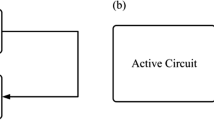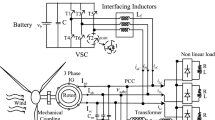Abstract
An idle speed engine model has been proposed and applied for the development of an idle speed controller for a 125 cc two wheeler spark ignition engine. The procedure uses the measured Indicated Mean Effective Pressure (IMEP) at different speeds at a constant fuel rate and throttle position obtained by varying the spark timing. At idling conditions, IMEP corresponds to the friction mean effective pressure. A retardation test was conducted to determine the moment of inertia of the engine. Using these data, a model for simulating the idle speed fluctuations, when there are unknown torque disturbances, was developed. This model was successfully applied to the development of a closed loop idle speed controller based on spark timing. The controller was then implemented on a dSPACE Micro Autobox on the actual engine. The Proportional Derivative Integral (PID) controller parameters obtained from the model were found to match fairly well with the experimental values, indicating the usefulness of the developed idle speed model. Finally, the optimized idle speed control algorithm was embedded in and successfully demonstrated with an in-house built, low cost engine management system (EMS) specifically designed for two-wheeler applications.
Similar content being viewed by others
References
Andersson, P., Eriksson, L. and Nielsen, L. (1999). Modeling and architecture examples of model based engine control. 2nd Conf. Computer Science and Systems Engineering in Linköping. Sweden.
Chaing, W.-P., Zhu. L. and Patankar, R. (2007). Mean value engine modeling and validation for a 4-stroke single cylinder gasoline engine. Trends in Applied Sciences Research 2,2, 124–131.
Cook, J. A. and Powell, B. K. (1988). Modeling of an internal combustion engine for control analysis. IEEE Control Systems Magazine, 20–26.
De Nicolao, G., Rossi, C., Scattolini, R. and Suffritti, M. (1999). Identification and idle speed control of internal combustion engines. Control Engineering Practice, 7, 1061–1069.
Ford, R. and Glover, K. (2001). Spark ignition engine idle speed control using a novel framework and enabling control of the tradeoff between fuel consumption and load rejection capability. Vehicle System Dynamics 36,2–3, 225–251.
Howell, M. N. and Best, M. C. (2000). On-line PID tuning for engine idle-speed control using continuous action reinforcement learning automata. Control Engineering Practice, 8, 147–154.
Hrovat, D. and Sun, J. (1997). Models and control methodologies for IC engine idle speed control design. Control Eng. Practice 5,8, 1093–1100.
Hsieh, F.-C., Chen, B. C. and Wu, Y. Y. (2007). Adaptive idle speed control for spark-ignition engines. SAE Paper No. 2007-01-1197.
Joo, S. H. and Chun, K. M. (1997). Idle speed modeling and optimal control of a spark-ignition engine. KSME Int. J. 11,1, 88–95.
Kim, D. and Park, J. (2007). Application of adaptive control to the fluctuation of engine speed at idle. Elsevier: Information Sciences, 177, 3341–3355.
Lee, Y. C. (2001). Design of controllers for the stable idle speed in the internal combustion engines. Int. J. Korean Society of Precision Engineering 2,4, 54–60.
Manzie, C. and Watson, H. C. (2003). A novel approach to disturbance rejection in idle speed control towards reduced idle fuel consumption. IMechE Part D: J. Automobile Engineering, 217, 677–690.
Moskwa, J. J. and J. Karl Hedrick, J. K. (1987). Automotive engine modeling for real time control application. Proc. American Control Conf., 341–346.
Nagashima, M. and Levine, W. S. (2006). Development of an engine idle speed and emission controller. Proc. 2006 American Control Conf., Minneapolis, Minnesota, USA.
Osburn, A. W. and Franchek, M. A. (2006). Reducing engine idle speed deviations using the internal model principle. J. Dynamic Systems, Measurement and Control, 128, 869–877.
Srail, M. S., Sindano, H., Gough, N. E. and Cole, A. C. (2002). Sliding mode idle speed ignition control strategies for automotive engines. Electronic Proc. 15th Int. Symp. Mathematical Theory of Networks and Systems, University of Notre Dame, USA.
Thornhill, M. and Thompson, S. (1999). Adaptive fuzzy logic control of engine idle speed. IMechE, Part I, 213, 145–155.
Thornhill, M., Thompson, S. and Sindano, H. (2000). A comparison of idle speed control schemes. Control Engineering Practice, 8, 519–530.
Wu, Y.-Y., Chen, B.-C. and Hsieh, F.-C. (2007). Modulization of four-stroke single-cylinder spark-ignition aircooled engine models. IMechE Part D: J. Automobile Engineering, 221, 1015–1026.
Author information
Authors and Affiliations
Corresponding author
Rights and permissions
About this article
Cite this article
Manivannan, P.V., Singaperumal, M. & Ramesh, A. Development of an idle speed engine model using in-cylinder pressure data and an idle speed controller for a small capacity port fuel injected SI engine. Int.J Automot. Technol. 12, 11–20 (2011). https://doi.org/10.1007/s12239-011-0002-3
Received:
Revised:
Published:
Issue Date:
DOI: https://doi.org/10.1007/s12239-011-0002-3




